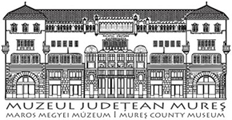Marisia - Maros Megyei Múzeum Évkönyve 29/3. (2009)
Rezi Botond, Nagy József-Gábor: Rescue Excavations at Chinari "Mociar" (Mureş County)
104 REZi BOTOND, Nagy józsef-GAbor first part of Ha Bi (the second part of 11th century and first half of 10th century B.C.)52. The future research and the unearthing of new features and the discovery of more material will bring further contributions to the knowledge of the cultural realities from this period. BIBLIOGRAPHY Andritoiu 1976 Andritoiu 1983 Andritoiu 1992 Ardeu 1995-1996 Bader 1970 Benkő 1992 Bouzek etal. 1966 Chita 2005 Ciugudean 1978 Ciugudean 1979 Ciugudean 1994 Ciugudean 1994a Ciugudean 1997 Gogältan etal. 1992 Gogältan - Isac 1995 Gogältan 2001 Andritoiu, I., Descoperiri arheologice pe Valea Streiului Inferior, Apulum, XVI, 393-413. Andritoiu, I., Consideratii asupra unor materiale arheologice apartinänd bronzului tärziu descoperite in imprejurimile Devei, Sargetia, XVI-XVII, 1982-1983,125-137. Andritoiu, I., Civilizatia tracilor din sud-vestul Transilvaniei in epoca bronzului, Bibliotheca Thracologica, II, Bucure?ti Ardeu, A. G., Contributii privind stadiul cercetärii Hallstattului timpuriu in spatiul intracarpatic, Sargetia, XXVI, 1, 189-226. Bader, T., Cäteva observatii privind sfär?itul epoch bronzului, Aluta, 1, 89-91. Benkő E., A középkori Keresztúr-szék régészeti topográfiája, Varia Archaeologica Hungarica V, Budapest. Bouzek, J. - Koutecky, D. - Neustupny, E., The Knovíz Settlement of North- West Bohemia, Fontes Archaeologici Pragenses, 10, 203-212. Chita, S., Monográfia istoricä a comunei Vultureni pänä in 1990, Cluj Napoca. Ciugudean, H., Noi descoperiri arheologice pe teritoriul judetului Alba (I), Apulum, XVI, 39-53. Ciugudean, H., Noi descoperiri arheologice pe teritoriul judetului Alba (II), Apulum, XVII, 65-86. Ciugudean, H., The Hallstatt A Period in Central Transilvania, The Early Halbtatt Period (1200-700 B.C.) in South-Eastern Europe, H. Ciugudean, N. Boroffka (ed.), Bibliotheca Musei Apulensis, I, Alba-Iulia, 25-40. Ciugudean, H., Perioada Hallstatt A in Centrul Transilvaniei, Apulum, XXXI, 59-73. Ciugudean, H., Cercetäri privind epoca bronzului ^i prima värstä a fierului in Transilvania, Bibliotheca Musei Apulensis, VII, Alba-Iulia. Gogältan, Fl. - Coci?, S. I. - Paki A„ Säpäturi de salvare la Cluj-Beca? - 1989, Ephemeris Napocensis, II, 7-17. Gogältan, Fl. - Isac, A., Die spätbronzezeitliche Siedlung von Cä?eiu (I), Ephemeris Napocensis, V, 5-26. Gogältan, Fl., The Settlement of Cä?eiu and Some Problems Concerning the Late Bronze Age in the Center and Northern Transylvania, Kacsó C. (Hrsg.), Der nordkarpatischen Raum in der Bronzezeit. Symposium Baia Mare, 7-10 Oktober 1998, Baia Mare, 191-214. 52 The Ha A-В was considered a transition period to the Early Iron Age (Leahu 1973; Gumä 1993), later as part of the Late Bronze Age (Bader 1970, 91; Kacsó 1990; Gogältan et alii 1992; Gogältan 1999; Gogältan 2002) being divided in three (Gogältan et alii 1992; Gogältan 2001; Gogältan 2002) and four phases (Kacsó 1990, 49) later C. Kacsó returnes on the three phases. The period Ha A2-Bi corresponds to the Gáva culture from the Tisza River area (Szabó 2004, 83; Szabó 2004a, 137). Iron I is parallel with the end of Ha A and Ha B, from Central Europe (Gogältan 2002, 45) and marks the first occupation layer at the fortified settlements of Teleac and Media? (Vasiliev 1995, 96).
